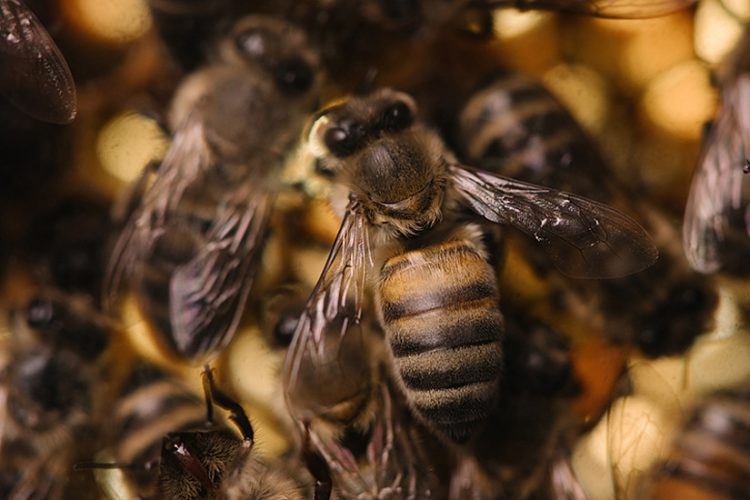Packed in wax: the University of Graz develops a technology to stop bee disease

Erwachsene Bienen sind gegen die Faulbrut resistent. ForscherInnen der Uni Graz ist es gelungen, ihren Schutz weitgehend auch auf Larven zu übertragen. Foto: Uni Graz/Kernasenko
“Adult bees have a lecithin-like substance in their intestines that makes them resistant to foulbrood,” explains Wolfgang Schühly, head of the Bee Health Research Group at the University of Graz.
Together with Ulrike Riessberger-Gallé and Javier Hernández López, he has isolated this substance – known as lysophosphatidylcholine or LPC for short – and tested its efficacy in larvae.
After extensive research, the trio finally found a way of administering the substance to the larvae: “We incorporate the LPC into the wax from which the bees then build the honeycombs in the hive,” explains Schühly.
From there, the active substance reaches the animals via the royal jelly in which the larvae lie. In this way, the concentration of the body’s own substance is increased and the natural immune defence is supported.
The researchers are now testing their technology in field trials in Spain and in the south of the US, where bees also breed in winter and foulbrood occurs more frequently.
As part of the “spin-off fellowship” funded by the Austrian Research Promotion Agency (FFG) with about 350,000 euros, they want to demonstrate the practical suitability of the technology under real conditions and set up a company to manufacture and market the enriched wax honeycombs.
“The American foulbrood affects the entire agricultural sector because it reduces pollination performance,” explains Schühly, emphasising the importance of a successful protective measure.
Dr Wolfgang Schühly
Institute of Biology, University of Graz
Tel.: +43 (0)316 380 8754
Media Contact
More Information:
https://news.uni-graz.at/de/detail/article/in-wachs-gepackt/All latest news from the category: Life Sciences and Chemistry
Articles and reports from the Life Sciences and chemistry area deal with applied and basic research into modern biology, chemistry and human medicine.
Valuable information can be found on a range of life sciences fields including bacteriology, biochemistry, bionics, bioinformatics, biophysics, biotechnology, genetics, geobotany, human biology, marine biology, microbiology, molecular biology, cellular biology, zoology, bioinorganic chemistry, microchemistry and environmental chemistry.
Newest articles

Bringing bio-inspired robots to life
Nebraska researcher Eric Markvicka gets NSF CAREER Award to pursue manufacture of novel materials for soft robotics and stretchable electronics. Engineers are increasingly eager to develop robots that mimic the…

Bella moths use poison to attract mates
Scientists are closer to finding out how. Pyrrolizidine alkaloids are as bitter and toxic as they are hard to pronounce. They’re produced by several different types of plants and are…

AI tool creates ‘synthetic’ images of cells
…for enhanced microscopy analysis. Observing individual cells through microscopes can reveal a range of important cell biological phenomena that frequently play a role in human diseases, but the process of…





















